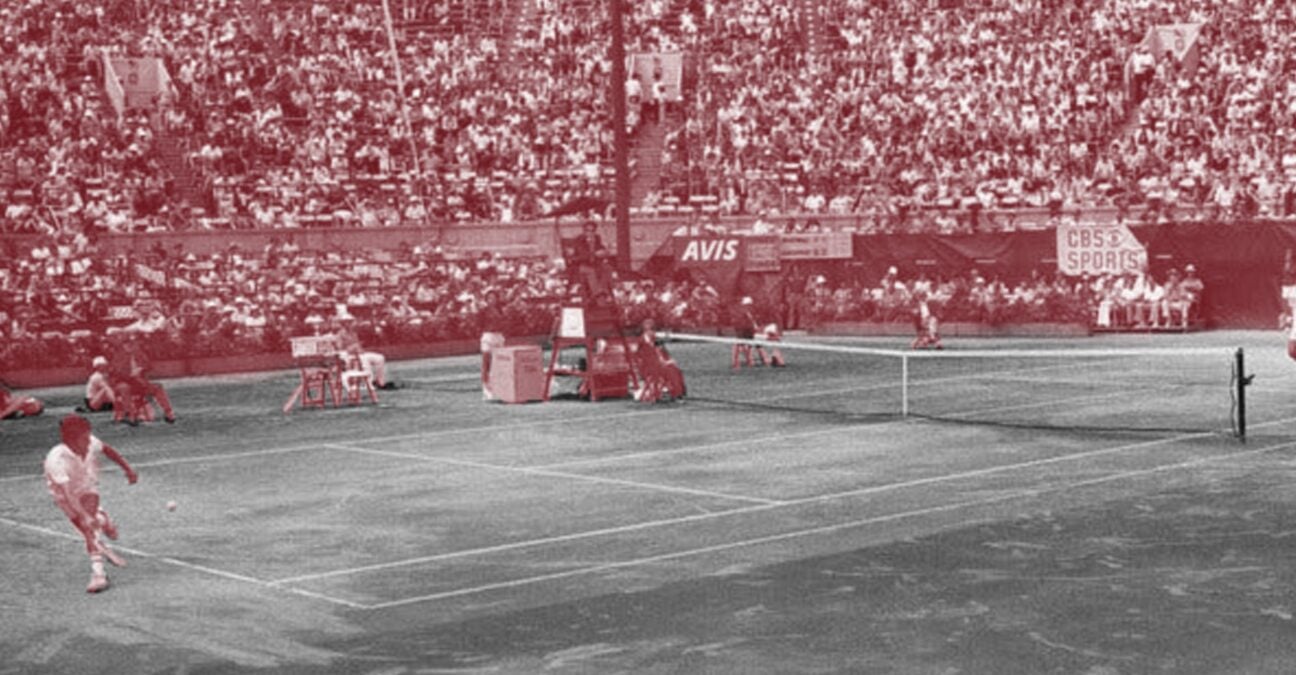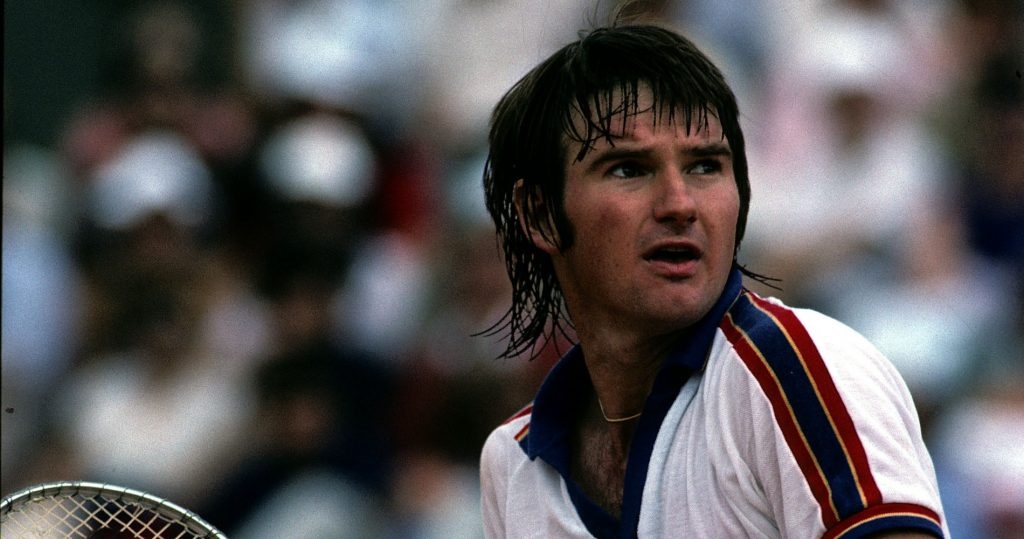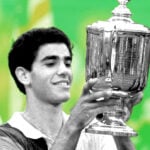August 27, 1975: The day a very special US Open edition began, with clay and night sessions
Every day, Tennis Majors takes you back in time to relive a tennis event which happened on this specific day. On this day 47 years ago, the 1975 US Open edition kicked off with a new surface, the introduction of night sessions and a modified format for the earlier rounds in the men’s draw

What happened exactly on that day?
On this day, August 27 in1975, the US Open began, implementing two major changes. For the first time, at Forest Hills, the American Grand Slam was to be played on green clay instead of the traditional grass. This change was introduced after many players had complained about the quality of the grass courts over the past years.
Bill Tabert, the Tournament Director, had also announced that some matches might be scheduled at night, introducing the concept of the famous night-sessions. Besides that, the men’s matches were to be played in the best-of-three sets format until the round of 16, as there were concerns that longer matches would disturb the schedule.
The place: The West Side Tennis Club
The US Open (known as the US Nationals before 1968 and the start of the Open Era) was established in 1881. Although it is the only Grand Slam to have been played every single year without an interruption since its inception, it had moved locations several times throughout the 20th century. First held in August 1881 on grass courts at the Newport Casino, on Rhode Island, the tournament moved to New York in 1915, where it was held at the West Side Tennis Club, at Forest Hills.
The facts: The US Open true to its reputation as a trend-setter
Bill Talbert, the US Open Tournament Director, was not as attached to tradition as members of the All England Club at Wimbledon. In 1970, he was the first to introduce the tiebreak in a Major tournament. Three years later, the US Open was the first Grand Slam event to offer equal prize money to men and women. In 1975, the organizers, who were not afraid to experiment and innovate, decided to implement two changes.
The most noticeable one was the switch from grass to green clay (also known as Har-Tru, a surface was faster than European red clay). In previous years, many players had complained about the Forest Hills grass courts, which they deemed as being uneven and too soft. This was enough to push Talbert to invest $240,000 to switch to green clay. It was a pretty bold decision, considering that with the exception of Jimmy Connors in 1974, the majority of US Open winners in the Open Era all played the serve-and-volley style.

“It will take a complete player to win the Open this year,” said Talbert in June 1975, unveiling the new courts, according to The New York Times.
The Tournament Director knew he was not going to please everyone with this little revolution, but he couldn’t care less : “This is the US Open, which I consider the world’s major tournament, and I believe that every player should consider it a privilege to compete in it, regardless of what kind of courts we have.”
With the idea that matches could last longer on clay than on grass, it was decided to use the best-of-three sets format for the men’s matches until the fourth round.
The other major innovation of the 1975 US Open was the introduction of night matches. According to Paul Fein, quoted by vice.com, “You had millions of people working 9 to 5 who couldn’t watch. It was a brilliant move to make the sport more accessible to the masses.”
The first players to compete in what would be later referred to as a night session were American Stan Smith and New Zealand’s Onny Parun. In a revolutionary best-of-three US Open first-round, played on green clay under the lights, the Kiwi player upset the 1971 champion 6-4, 6-2, in front of 5,000 spectators. The initiative was appreciated by the public.
What next? US Open continues to innovate in the decades to come
Manuel Orantes, a clay-court specialist, would claim the men’s title at the US Open in 1975, defeating Jimmy Connors in the final (6-4, 6-3, 6-3).
The women’s title was won by Chris Evert, who defeated Evonne Goolagong Cawley, 5-7, 6-4, 6-2. It was Evert’s fouth career Grand Slam title, and her first US Open title.
The clay court era at the US Open would only last three years, until the event moved to Flushing Meadows and adopted hard courts. This last change of surface would allow Jimmy Connors to achieve the feat of winning the US Open on three different surfaces.
The night sessions, acclaimed by the fans, would become the US Open trademark, producing some of the most dramatic matches in tennis history. In 1988, the Australian Open would follow in those footsteps and also schedule night sessions. The French Open followed suit in 2021.
The US Open would continue innovating throughout the years. In 1978, it would be the first Grand Slam tournament to be played on hard courts. In 1984, Super Saturday would be established, with the women’s final being scheduled the same day as both men’s semi-finals. In 2006, the US Open would also be the first major tournament to use Hawk-Eye technology.













